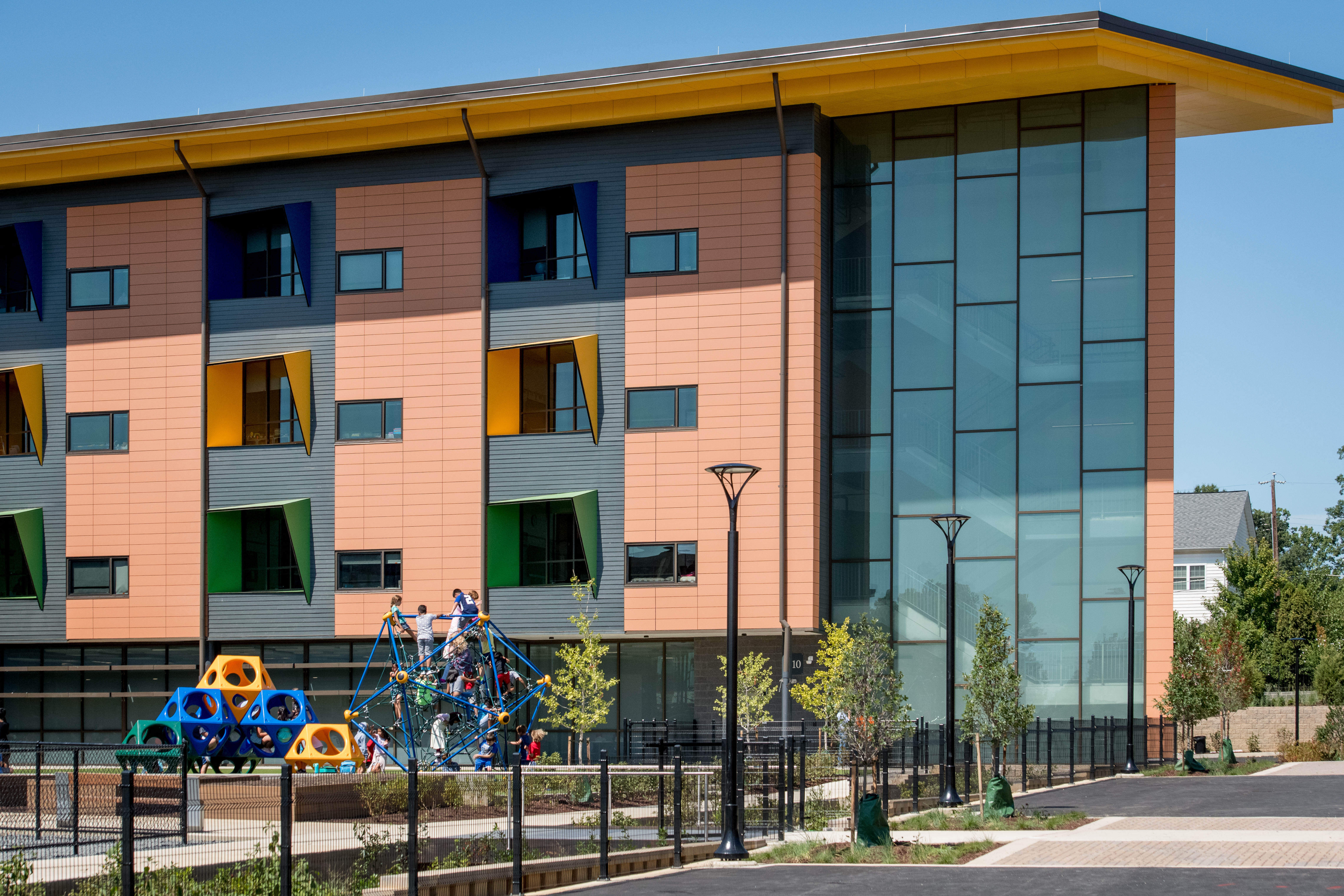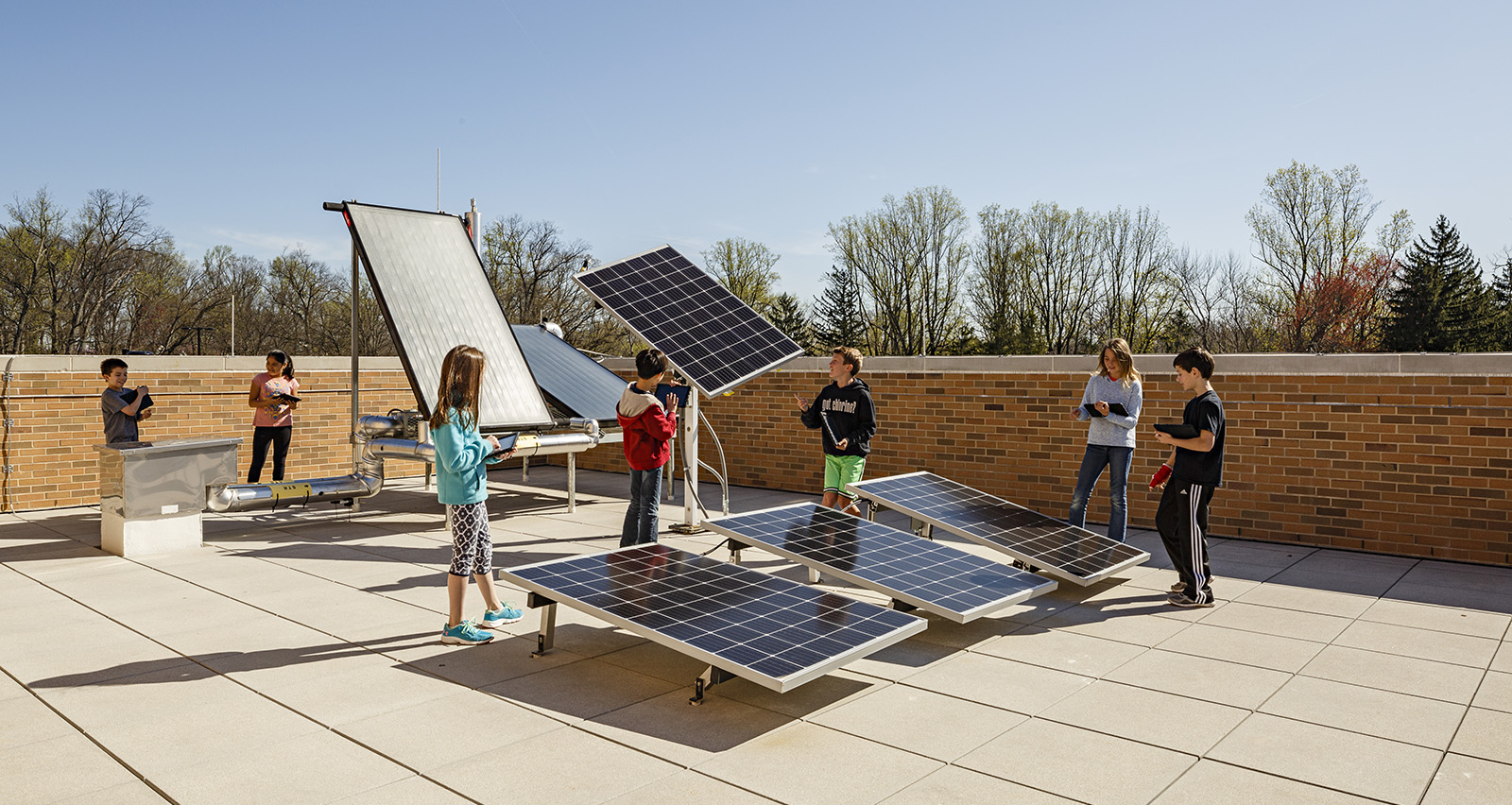A Net Zero Energy (NZE) school is a highly efficient school that produces as much renewable energy as it uses over a 12 month period. Interested in transitioning your child’s school system to NZE, but don’t know where to start? Here are five steps you can take as a parent:
1) Educate yourself and others on the benefits of NZE schools. At VMDO, our NZE schools have shown the following benefits:
- They save money. Our NZE schools are highly efficient, often using only a quarter of the energy of what a typical school uses. They rely on geothermal systems, which eliminate the need for cooling towers and the massive volumes of water they use. They use off the shelf components and are easy to maintain. All of this adds up to real savings: Discovery Elementary in Arlington, VA, costs $0.11/SF a year to operate, compared to a district average of $1.32 for existing elementary schools.
- They don’t have to cost more. We have been able to deliver four NZE schools at costs/SF that align with those of conventional schools. To do so requires an experienced design team, buy-in to the NZE goals from project outset, and a commitment to rethinking everything.
- They provide better learning environments. Our NZE schools rely on daylighting as the primary source of lighting and they have dedicated outdoor air systems that keep the air fresh and clean. Both qualities have been shown to support better learning and to reduce absenteeism.
- They have happier teachers. Better learning environments mean better working environments. In 2018, Bluestone Elementary reported 36% fewer teacher absences compared to other district schools, and it won the national 2019 Livable Buildings Award for its high occupant satisfaction, architectural design, and sustainability.
- They provide rich teaching opportunities. Our schools connect students to the systems around them, becoming tools for educators at all grade levels in a range of forms – from environmental graphics to interactive dashboards.
- They serve healthier food. Our NZE schools have efficient kitchens that don’t allow frying, so everything is baked or steamed. They have only the refrigeration they need –most of the food is prepared fresh.
2) Talk with your school district about their current energy use and their plans for upgrading or building new facilities. Share with them the benefits of an NZE approach and encourage them to talk to/visit other districts who have gone through the process.
3) For new construction, encourage your district to include net zero language, and to require net zero energy experience when soliciting proposals from consultants – and make sure that criteria is considered when making final selections.
4) For existing facilities, encourage your district to explore efficiency upgrades and on-site renewable production, both of which can be done without additional investment: through ESCOs, which finance the cost of upgrades that are then financed through energy savings, and renewables through power purchase agreements (PPAs), which cover the cost of solar installations through agreements for purchasing that energy over a set period.
5) Participate. The most powerful thing a parent can do is to ask questions, participate in the process, and hold districts accountable.
 Alice West Fleet Elementary School, a net-zero energy school in Arlington, Virginia
Alice West Fleet Elementary School, a net-zero energy school in Arlington, Virginia
Additional resources:
The USGBC’s Center for Green Schools has developed the School Board Advocacy Toolkit, which contains some great resources and strategies for talking to school boards about integrating green facilities, programs, and policies.
The Center for Green Schools has also developed a Getting Started Checklist to assist parents, educators, and/or community members to start green programs at schools.

